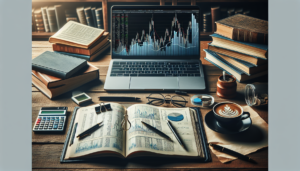Investing in commodities can be a valuable addition to a well-diversified investment portfolio. Commodities are basic goods used in commerce that are interchangeable with other goods of the same type, often traded on exchanges. Commodity investing involves raw materials consumed directly or used to create products, offering investors the potential for returns and a hedge against inflation. This comprehensive guide will explore the world of commodity investing, providing insights into the types of commodities, investment methods, advantages and risks, market analysis, and practical tips for investors.
Introduction to Commodity Investing
What Are Commodities?
Commodities are essential raw materials that serve as the building blocks for various industries and products. These basic goods are used in commerce and are interchangeable with other goods of the same type. Commodities are often traded on exchanges, where their prices are determined by supply and demand dynamics, as well as other market factors.
Types of Commodities
Commodities can be broadly categorized into two main types:
- Hard commodities: These include natural resources such as metals (gold, silver, copper) and energy (crude oil, natural gas, coal).
- Soft commodities: These encompass agricultural products like wheat, corn, soybeans, coffee, and livestock.
Each type of commodity has its own unique characteristics, supply-demand dynamics, and market drivers that influence prices and investment opportunities.
Methods of Investing in Commodities
Investors have several options when it comes to investing in commodities. The following are some of the most common methods:
Physical Commodities
One way to invest in commodities is by purchasing the physical goods themselves. For example, investors can buy precious metal bullion, such as gold or silver coins and bars. However, this method involves storage and security considerations.
Futures Contracts
Futures contracts are agreements to buy or sell a specific quantity of a commodity at a predetermined price at a specified time in the future. These contracts are often used by investors to speculate on price movements or hedge against price fluctuations. Futures trading requires a thorough understanding of the market and involves significant risk.
Exchange-Traded Products (ETPs)
Exchange-traded products (ETPs) are investment funds that track the performance of a specific commodity index. These funds are traded on stock exchanges, providing investors with exposure to commodity prices without the need to directly own the physical goods. Examples include exchange-traded funds (ETFs) and exchange-traded notes (ETNs).
Mutual Funds and Commodity Stocks
Investors can also gain exposure to commodities through mutual funds that invest in commodity-related companies or through commodity stocks. For example, an oil and gas fund may invest in stocks of companies involved in energy exploration, refining, storage, and distribution.
Advantages and Risks of Commodity Investing
Advantages: Diversification and Inflation Hedge
Investing in commodities offers several potential advantages. Firstly, commodities can provide diversification benefits to an investment portfolio, as their performance is often uncorrelated with traditional asset classes like stocks and bonds. Additionally, commodities are often seen as a hedge against inflation, as their prices tend to rise along with general price levels.
Risks: Price Volatility and Global Events
However, commodity investing also comes with its own set of risks. Commodity prices can be highly volatile, subject to rapid and significant fluctuations based on supply and demand factors, weather conditions, geopolitical events, and economic sentiment. Moreover, the commodity markets are heavily influenced by global events and regulatory considerations, which can introduce additional uncertainty.
Market Analysis and Investment Strategies
Supply-Demand Dynamics
Understanding the supply-demand dynamics is crucial for making informed decisions in commodity investing. Factors such as production levels, consumption patterns, inventories, and global trade flows can significantly impact commodity prices. Keeping a close eye on these fundamentals can help investors identify potential investment opportunities or risks.
Geopolitical Factors
Geopolitical events and policies can have a profound impact on commodity markets. Global infrastructure projects, trade agreements, political instability, and environmental regulations are just a few examples of factors that can influence commodity supply and demand, and consequently, prices. Investors should monitor these developments closely.
Economic Indicators
Economic conditions and indicators such as GDP growth, industrial production, and consumer spending can provide valuable insights into the potential demand for commodities. A growing economy often leads to increased consumption of raw materials, which can drive up commodity prices. Conversely, economic slowdowns can dampen demand and put downward pressure on prices.
Long-term vs. Short-term Strategies
Investors should consider their investment horizon and goals when developing a commodity investment strategy. Long-term strategies may involve investing in commodity-related companies or ETPs with a focus on fundamental analysis and a buy-and-hold approach. Short-term strategies, on the other hand, may involve more active trading based on technical analysis and market sentiment.
Practical Tips for Investing in Commodities
Consulting Financial Advisors
Given the complexities and risks involved in commodity investing, it is advisable to consult with financial advisors who have expertise in this area. They can provide guidance on market trends, risk management, and tailored investment strategies based on individual financial goals and risk tolerance.
Resources for Further Learning
Investors should continuously educate themselves about the commodity markets and investment strategies. There are numerous resources available for further learning, including financial publications, online courses, and educational materials provided by financial institutions. Additionally, investors can leverage financial tools and platforms that offer market analysis, price data, and risk management features.
By understanding the fundamentals of commodity investing, analyzing market dynamics, and implementing sound investment strategies, investors can potentially benefit from the opportunities presented by this unique asset class. However, it is crucial to approach commodity investing with caution, thorough research, and a well-diversified portfolio to manage risks effectively.
See also:






